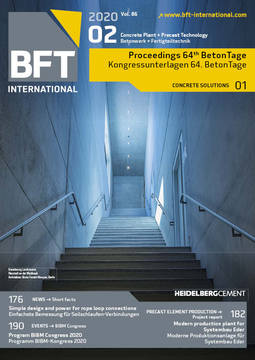Challenges for the construction industry
In Germany, global warming is likely to result in increasingly extreme weather events, more frequent and heavier precipitation, and extended heat and drought periods, combined with a generally higher pressure on the climatic water balance owing to increased evaporation. Furthermore, Germany has entered a new era of record-high temperatures in the wake of simultaneously exceeding the 40°C threshold on 25 July 2019 at an unprecedented 25 weather stations operated by Deutscher Wetterdienst (DWD; German Meteorological Service) and the Bundeswehr, the German armed forces. Against this backdrop, we should ask ourselves if such extreme weather events will be the rule rather than the exception in the coming years. This scenario has already come true for heat stress in urban areas, whereas the outlook is more complex for torrential rain. Nonetheless, we should also assume a higher risk for such short-duration events that may potentially cause major damage. Thus, the adverse effects of the general failure to implement effective climate protection measures are starting to become painfully tangible, and costly, in many fields. For instance, activities with the aim to adapt to increasingly extreme precipitation will incur enormously high costs of risk management in the face of limited stormwater drainage capacity in built-up areas and the greater need for irrigation combined with an increased risk of water logging. This particularly applies to the German plains that are either densely populated or used for intensive agriculture. In addition, the settlement pressure prevalent in urban areas gives rise to competing interests in terms of urban and regional planning with a focus on water management. Add to this that insurance companies are increasingly calling for specific rules and standards for construction methods adapted to more frequent torrential rain and flood events. The DWD is thus working on continuously improving its forecasting capabilities especially for heavy rain and drought events, as well as on developing products to support decisions informed by sound climate data, particularly for the purpose of implementing preventive measures countering such more pronounced natural hazards emerging as a result of climate change.






